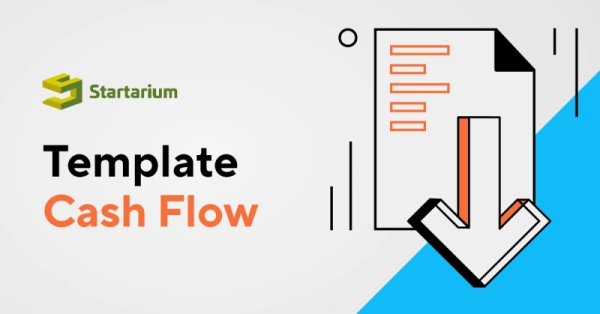Have you decided how you will make money from your business? How you will monetize what you offer and the prices you will charge are decisions you need to think about ahead of time. Find out what options you have and how to make the right choices for you.

The price is not just the "a figure on the label". Price is the most powerful mechanism for profit, more powerful than volume (number of units sold) or cost control.
>> Watch Lucian's course on pricing
What pricing approaches can I use?
You have 3 approaches that will help you use the power that price gives you:
-
Cost Plus: Add a % to what it costs you to produce or deliver the service. Simple, but disconnected from the market: it can be too high or too low compared to what customers would be willing to pay.
-
Positioning with respect to the competition: set a price that is higher or lower than that of your competitors. Something is missing: how do you know if your product should be more expensive or cheaper?
-
Value-based pricing: how much the customer is willing to pay. The best, but the most difficult one in terms of the willingness-to-pay effort.
What monetization models are available to me?
Before putting a figure on the price tag, you need to decide what you will write on the label. Customers care more about "how" or "what" they buy, than "how much" they pay.
Here are some monetization models:
One time purchase - Classic. It is how we buy most products and services.
Single purchase + services. Do you want extended warranty for an extra amount added to the price of a camera? Or maybe your developers need you to buy another year of customer support for the software you bought licenses for last year?
Monthly/annual subscription. Magazines, business apps, Netflix or Spotify - subscriptions have become very common.
Pay-as-you-go/pay-per-use. It may sound surprising, but Michelin no longer sells truck tires to large customers. Instead, they pay a fixed amount for every kilometer driven by their fleets, just as they would pay for every minute of a phone call.
Dynamic pricing. We are already used to airline tickets and their dynamic prices. What we are not used to - or maybe we haven't noticed yet - are smart supermarkets that update the price of their products in real time, including according to the time.
Auction. Most of us are exposed to auctions only on olx.ro or ebay.com. Auctions are, however, a mechanism that generate win-win results in many more complex situations.
Freemium. Especially in technology, the basic package is free, and the entrepreneur is betting that enough customers will want the Premium package.
How do I choose the right model?
In order to make a good decision, keep the following questions in mind:
-
To what extent will customers accept or understand the model?
-
How does the model fit into your longer-term plans?
-
How does the model fit into the current stage of your business?
-
What is your competition doing?
-
How difficult is your model to implement?
How do I choose the right pricing strategy?
The pricing strategy involves deciding what the price should do for your business:
-
Maximization: the "optimal price" that will bring you the highest possible income or profit.
-
Penetration:
the price that will get you the most customers quickly – usually a lower price. -
Skimming:
"optimized" pricing for every stage of the product life cycle, more visible especially in some industries. For example, video games have a maximum price at launch, but get cheaper over time.
How do I calculate the optimal price?
Calculating the optimal price is difficult for a startup, because you need to know how demand changes depending on the price - a "demand curve".
Until you have such data, you have two simpler options:
-
compare different prices, just like Maria, the entrepreneur in the video presented at the beginning, does and think about how realistic the options are
-
use some of the approaches below in surveys so as to obtain some indicative data
How do I find out the customers’ willingness to pay?
The customers' willingness to pay (WTP) is a specific business metric, expressed as a number.
In order to estimate the WTP as accurately as possible, you have several tools at your disposal:
1. Price exploration questions in an interview
-
What price do you consider to be acceptable? Why?
-
What price do you consider high? Why?
-
What price do you consider prohibitively high? Why?
-
Would you buy this product for the price of ...? Why?
Recommendation: The most important part of this type of interview is not the answers related to the price, but the part where you find out Why? the customer thinks so.
2. The price level interview/questionnaire
-
On a scale of 1 to 5, how likely is it that you would buy this product at the price of ...?
-
If the answer is 4 or 5, stop. For most industries, an answer of 5 means about a 50% chance.
-
If the answer is 1, 2 or 3, drop the price one level lower and ask again. Repeat until the answer is 4 or 5.
Recommendation: What "one level down" means is up to you. Determine in advance what the price levels you want to test are. You can repeat the process with the same customer for multiple product/service configurations if you need to.
3. Evaluate the relative value of the product features
-
If your product may have several features, but it's hard to make a decision, a quiz and a Max/Diff analysis can help.
4. Set the right price
-
Once you have determined the relative value of every feature of the product, follow up with a set of interviews where customers can build their product and set the price. So, the price will go up as they add more and more features.
Recommendation: Just as with the interview, the resulting price is less important than understanding why they chose the features they did and why they stopped at that price.
Learn, learn, learn
Price is indeed one of the most powerful business tools, but setting the price is a difficult and highly emotional decision – especially for the entrepreneur.
These two books will help you learn more about the introduction we presented here:
-
Hermann Simon – Confessions of the Pricing Man: How Price Affects Everything
-
Madhavan Ramanujam, Georg Tacke – Monetizing Innovation: How Smart Companies Design the Product Around the Price
Lucian Grămescu is Head of Operations RGT Cycling and a consultant with more than 10 years of experience in business incubation.














